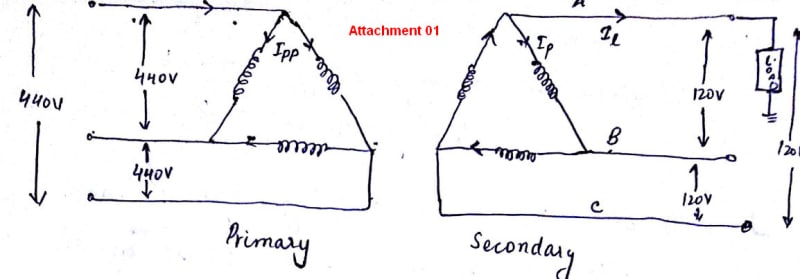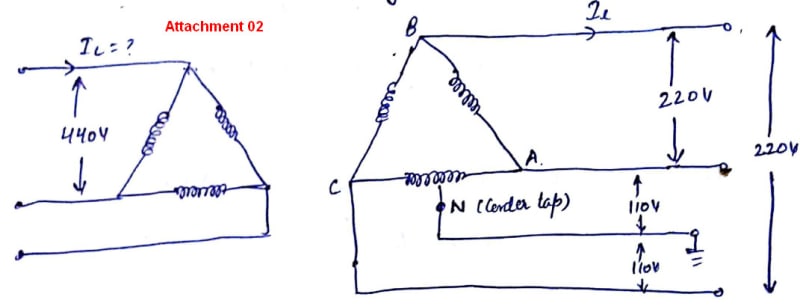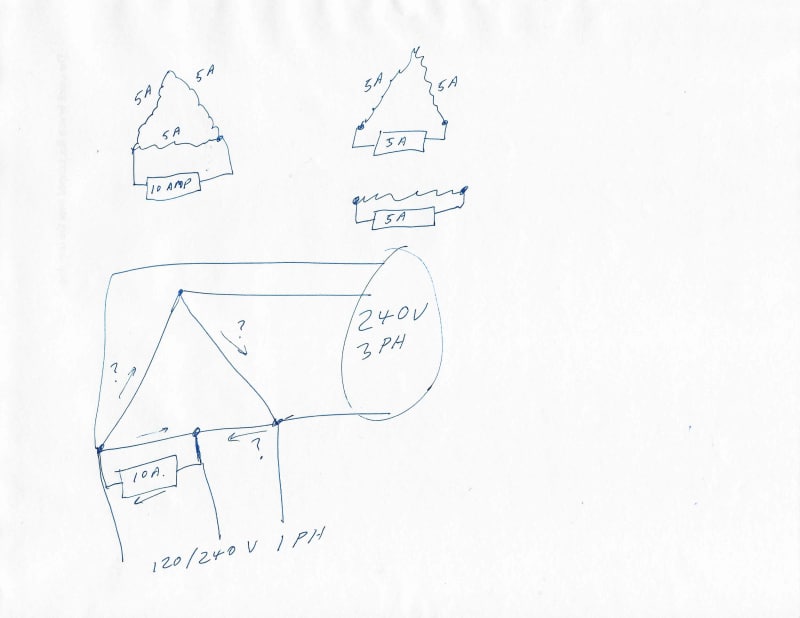AAffoonnjjee
Electrical
- Apr 10, 2017
- 16
Good Day,
My question is in regards to connecting an unbalanced load, single phase, 120VAC (10 fans) to a delta-delta transformer. Load is 8.3A rated current at 120VAC. Once we connect these 10 fans to the transformer we have phases B and C broken. Why is it that there will be a virtual and a real transformer? Which phases are the virtual, is it the one to which we connect the load, or is the ones that are broken? Now, if our pf = 1 (purely resistive load) and we have a 10kW load, the A phase supplying power to the load will split into 5KW and 5KVA. Why does it split? Where does the 5KVA comes from? Similarly, the other two phases (B and C) provide 5KVA each. I’m confused about why that occurs. Could someone clearly explain this topic with diagrams and point to a text where it explains this notion. Please help explain/visualize this. Also, if we have a center-tapped delta-delta transformer and we tie 10 fans between two phases and neutral, would we also have this virtual transformer issue?
My question is in regards to connecting an unbalanced load, single phase, 120VAC (10 fans) to a delta-delta transformer. Load is 8.3A rated current at 120VAC. Once we connect these 10 fans to the transformer we have phases B and C broken. Why is it that there will be a virtual and a real transformer? Which phases are the virtual, is it the one to which we connect the load, or is the ones that are broken? Now, if our pf = 1 (purely resistive load) and we have a 10kW load, the A phase supplying power to the load will split into 5KW and 5KVA. Why does it split? Where does the 5KVA comes from? Similarly, the other two phases (B and C) provide 5KVA each. I’m confused about why that occurs. Could someone clearly explain this topic with diagrams and point to a text where it explains this notion. Please help explain/visualize this. Also, if we have a center-tapped delta-delta transformer and we tie 10 fans between two phases and neutral, would we also have this virtual transformer issue?




